How to Get Rid of Grub Worms in the Yard
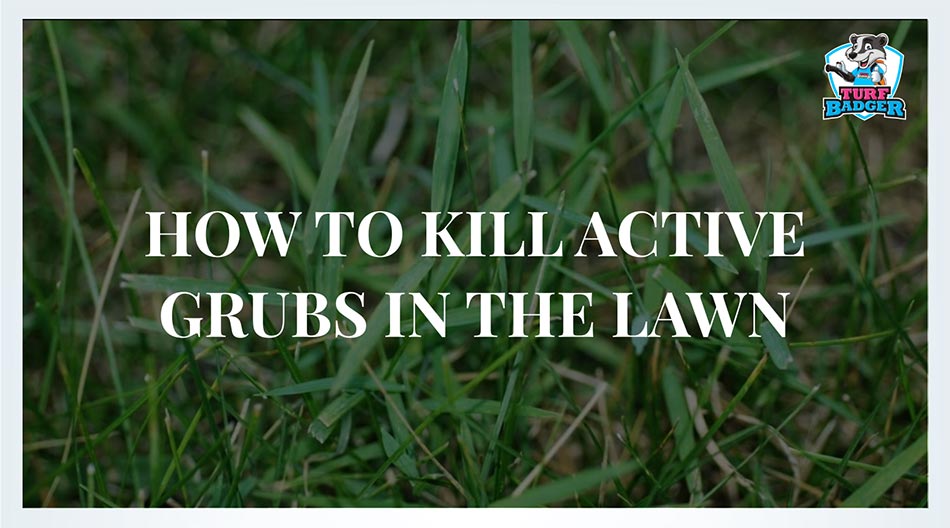
Throughout August and September, you may notice your lawn turning brown in certain areas. The chances are your lawn is being invaded by thriving grubs living and feeding below the lawn's surface. While it looks unpleasant, grub worms can be controlled with proper treatments, and your lawn can be restored to its appealing and healthy state.
There are some easy-to-apply and effective ways to kill active grubs in your lawn and prevent them from returning next season. By following our tips, you will be able to get back to enjoying your green and good-looking lawn in no time.
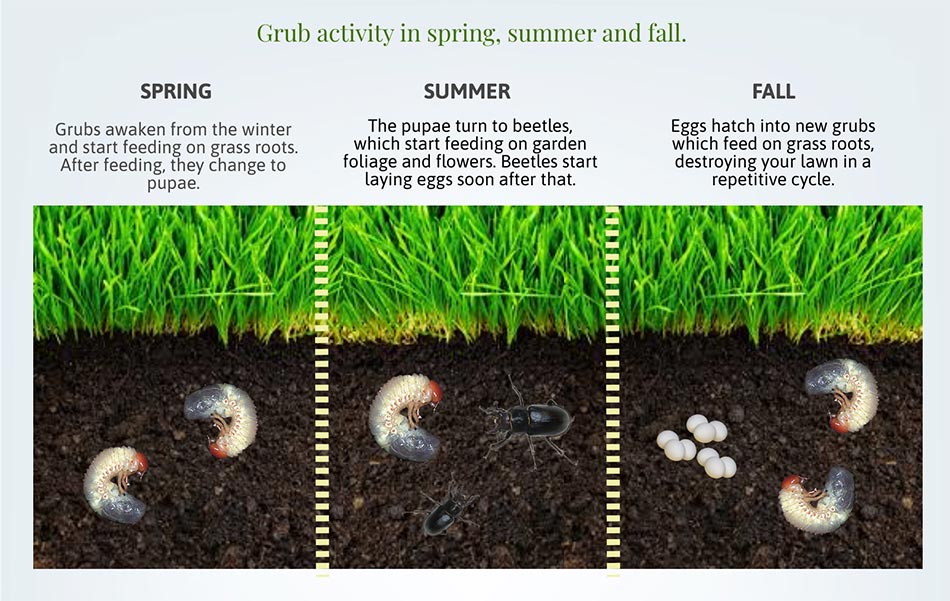
How to Identify Lawn Grubs
If you suspect your lawn is infested with lawn grubs, here are a few signs to look out for to confirm your doubts.
Increased Bird Activity
One of the first signs that suggest you have lawn grubs is bird activity in your garden. Grubs make a delicious snack for some birds, and you'll find them circling your lawn, looking for lunch.
Brown Patches
As your turf recovers from the hot summer temperatures, watch out for brown patches, especially after the fall fertilizing. You can lift some of the turf in the affected area, and if it rolls up easily like a carpet, chances are your lawn is invaded by grubs. Grubs feed on roots; therefore, they can weaken your turf and make it susceptible to lawn diseases.
Presence of Grubs in the Soil
Another clear sign of grub infestation is the presence of C-shaped and white worms in the soil. While a few of these harmful pests shouldn't worry you, a large number of them can destroy your beautiful lawn and cause severe damage.
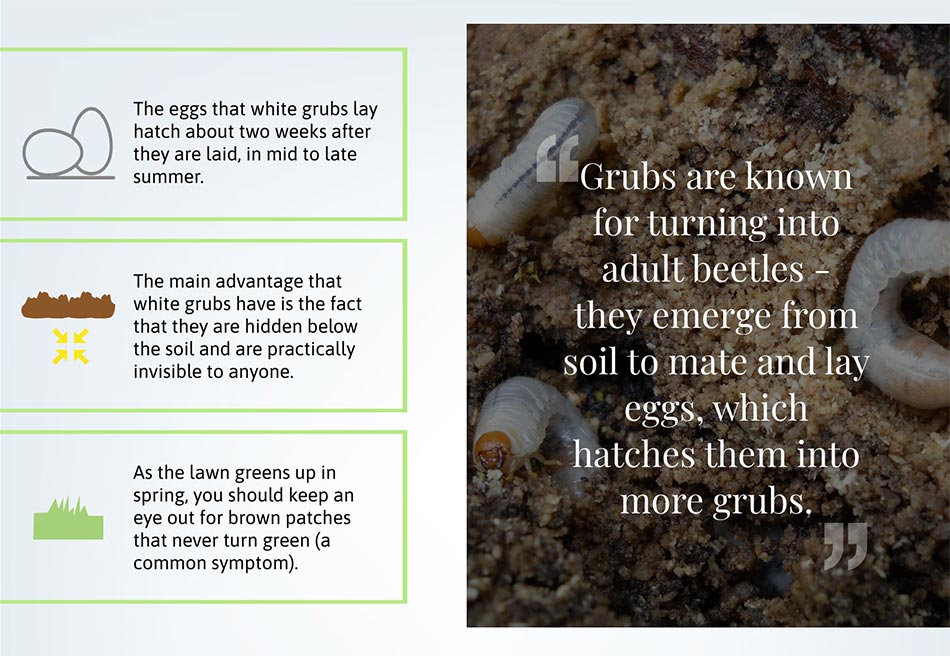
How Grubs Affect Your Lawn
Two of the most popular kinds of grubs are June bugs and Japanese beetles. Female Japanese beetles lay their eggs deep in the soil (1-2 inches) and spend two-three weeks producing as many eggs as possible. Once the eggs hatch, the grub worms start looking for food to develop and grow.
The grubs in your lawn are usually small, worm-like bugs that live deep in the soil and fuel their growth with roots. In fact, they will eat anything they find within the soil to grow stronger. By eating up the grassroots, grubs start to kill the patches in your green lawn, leaving brown patches in some areas.
As said before, grubs aren't dangerous if they are caught on time. However, when severe damages occur, it is a result of your lawn's health not being in the best place. If you don't care properly for your lawn, chances are the lawn is weak and can't dominate the grubs. But if you aerate and fertilize on time, mow accordingly, and water properly, your lawn will be able to beat any kind of pest invading your turf.
How to Repair Minor Damage from Grub Worms
If you can spot only a few grubs in your lawn, the situation is far from serious and can be handled easily. Here is what you need to do to salvage your turf without a complete restoration.
Use a Garden Rake
Use your garden rake to get rid of the brown, affected spots and remove the dead grass. Make sure to rake the damaged area a bit more to remove the extra thatch and loose soil.
Sprinkle Grass Seeds
The next thing you can do is sprinkle new grass seeds over the raked area. We recommend sprinkling 10-15 seeds per square inch for a completely bald area and 5-10 seeds per square inch for a semi-bald area. Sprinkle less if the surrounding turf is healthy
Tamp the Seeds
Once you've sprinkled enough grass seeds, tamp them with your foot. Next, it is good to sprinkle topsoil (no more than ¼ inch) over the grass seeds.
Water Your Lawn
Lightly water your lawn (you don't want it to be flooded with water) every day until the grass is a few inches tall. It is recommendable to water every day for two-three weeks.
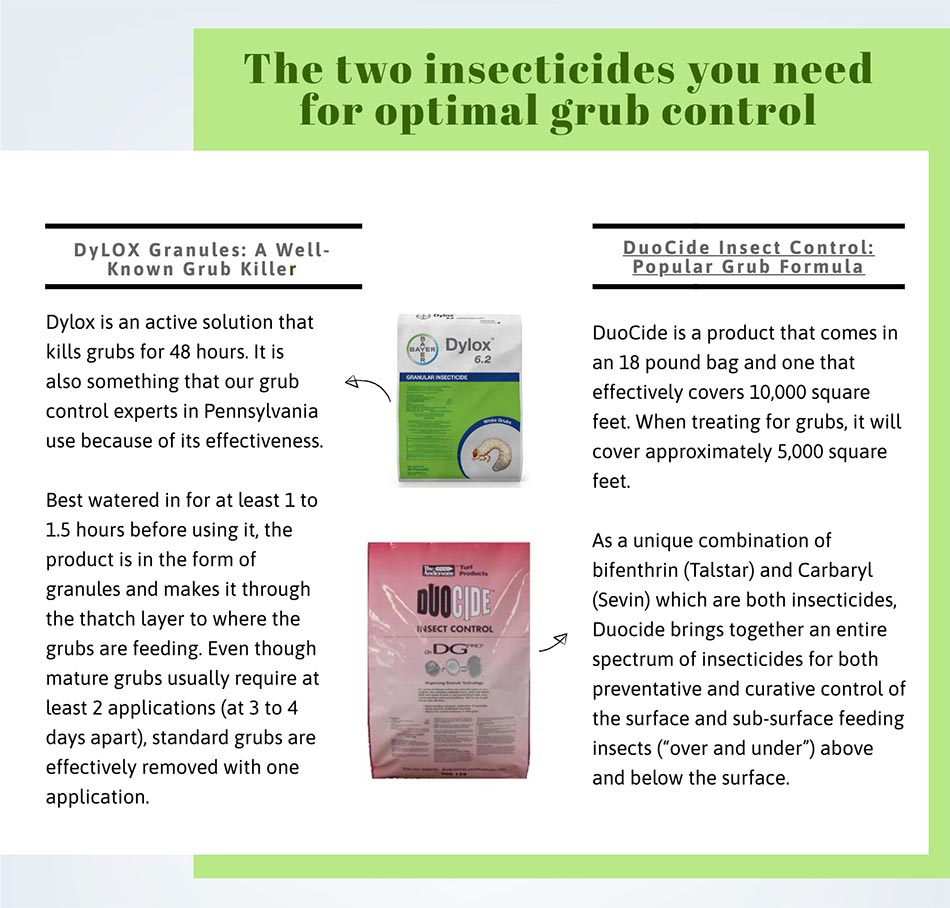
How to Kill Active Grubs In Your Lawn
If you have active grubs in your lawn and seem to grow and invade your turf, it is time to take more serious precautions. Here is how to get rid of active grubs for good:
Apply pesticides
Grub control products that contain carbaryl, imidacloprid, and bifenthrin are effective at destroying active grubs in an established lawn. There are also granular and liquid grub killers on the market.
When using granular pesticides, it is best to apply them using your garden spreader. Don't forget to water to get the product down into the soil and kill the active grubs. When using a liquid pesticide, make sure to mix it with water. Spray the affected areas carefully (avoid spreading on a healthy turf).
When applying pesticides, it is essential to select the best and most effective product.
Apply nematodes
Another way to kill active grubs in your lawn is by applying nematodes. Beneficial nematodes are small worms that move under the turf, deep in the soil. They kill the grubs by releasing pathogens that attack them and kill them quickly.
When choosing nematodes, make sure to pick ones that work effectively against grubs. Mix them with water in your regular garden sprayer. Water your lawn accordingly to keep it moist at all types and always spray the nematodes in the evening.
Attract more birds
One of the first signs indicating you might have grubs in your lawn is birds circling your house. A bird that feeds on grub worms is known as the House Wren. If you don't want to use pesticides to kill active grubs, you can try to attract more birds in your lawn. You can do this by leaving extra food for birds or building birdhouses around your backyard. Soon, you will start noticing House Wrens flying around with grub worms in their claws.
While this method is effective for getting rid of grubs, you have to be careful not to attract many birds because they can damage your lawn by digging up the turf and fighting over food.
Apply Milky Spore
Milky spore disease is effective in controlling and destroying active grubs in lawns, especially the Japanese beetle grubs. Milky spore is applied as a dust, and because grubs feed on the grass's roots, they consume the bacteria, get poisoned, and die.
Milky spore is a natural treatment for killing grubs and lasts a long time. To apply, use a tablespoon of the product and sprinkle over the affected areas. Don't use a garden sprayer. Water your lawn for 15 minutes every day.
How to Prevent Grubs from Coming Back
Grubs can happen to any lawn and appear numerous times during the year. Here are a few helpful tips to make sure you won't see grub worms soon.
- Water properly
- Plant deep-rooted grasses
- Don't mow your lawn often
- Overseed your lawn in spring and early fall
- Fertilize your lawn (the first phase is during early fall, the second phase is in early spring)
When left untreated, grubs will continue the destructive process, wrecking the roots of your turf.
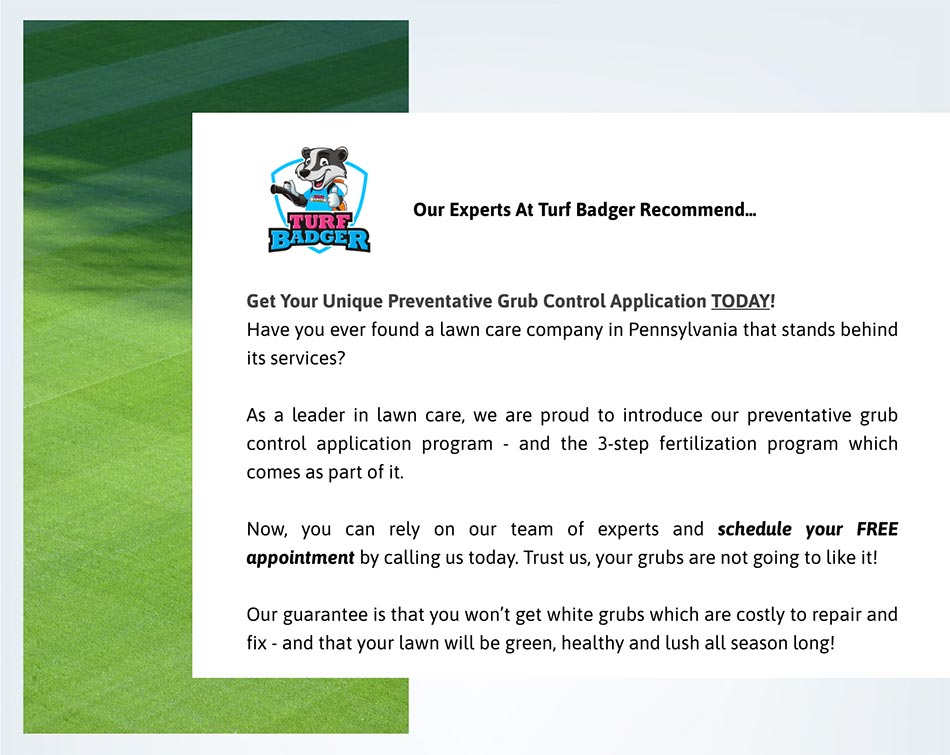
Having a professional lawn care company can help you get rid of active grubs for good, and make sure you have a beautiful and healthy lawn for years to come.
How to Get Rid of Grub Worms in the Yard
Source: https://www.turfbadger.com/blog/how-to-kill-active-grubs-in-your-lawn/
0 Response to "How to Get Rid of Grub Worms in the Yard"
Post a Comment